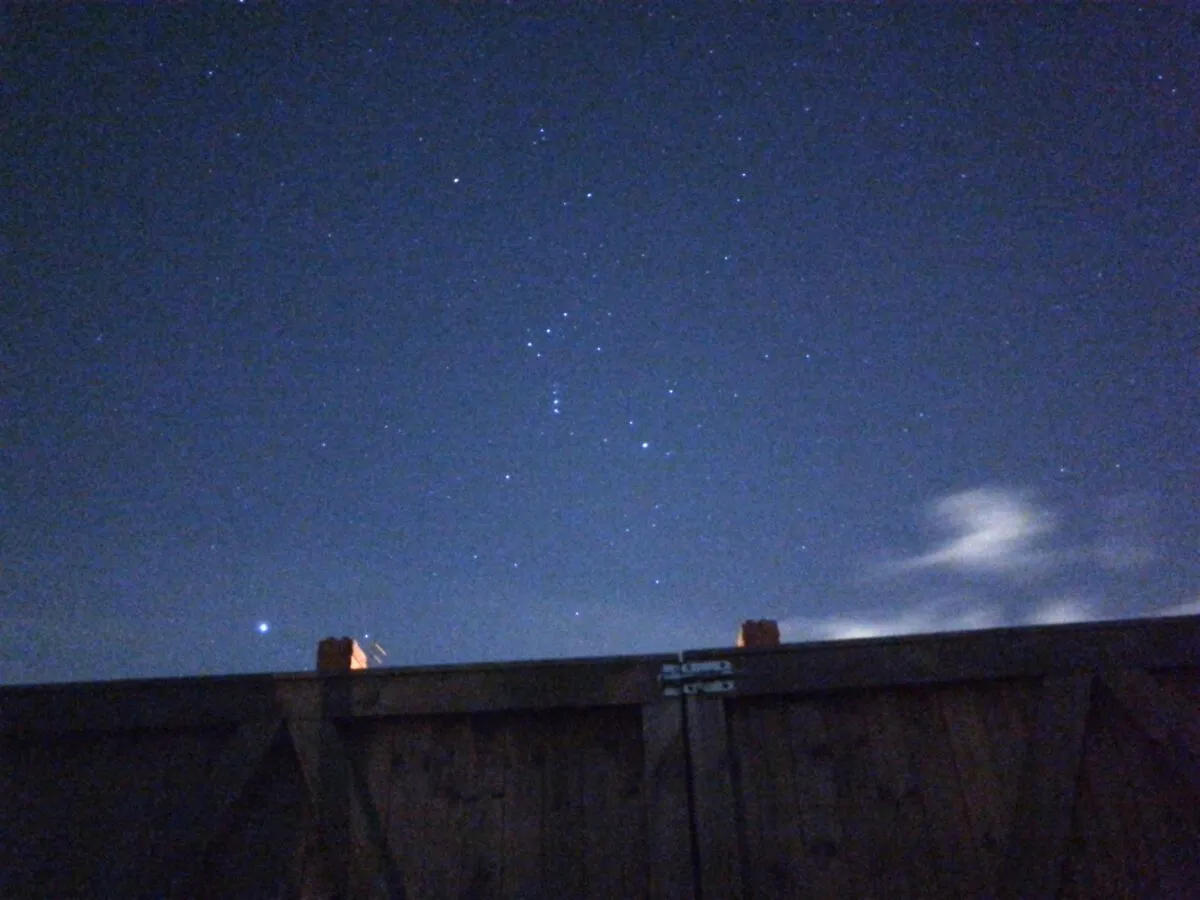Fans of Harry Potter may already be aware that the name Bellatrix translates as 'female warrior', but they might not know that Bellatrix is also the name of the 3rd brightest star in the constellation Orion.
Indeed, the familiar pattern of Orion contains a number of favourite stars.
The three that form his belt are obvious, as is bright orange Betelgeuse (Alpha (α) Orionis) in the northeast corner and bright blue-white Rigel (Beta (β) Orionis) in the southwest corner.
You can find Bellatrix in the night sky by locating the constellation Orion, then looking to the northwest corner of the main pattern.
Like Orion itself, Bellatrix is visible in the night sky during the colder months, from October through to early spring, and is particularly well-placed just after January.

Bellatrix (Gamma (γ) Orionis) is a B2 III type star, B2 indicating it’s a hot blue coloured star. Its temperature is 22,000K, some 3.7 times hotter than our own Sun.
The III indicates that it’s a giant star although it’s actually a hydrogen-fusing dwarf with a mass equivalent to nine Suns.
With an estimated age of 20 million years, it’s expected that Bellatrix’s hydrogen will run out in 7 million years.
It will then evolve into a class of star known as a subgiant before becoming a giant.

For a long time, Bellatrix was thought to be part of the Orion association to which many of the O and B type stars visible in the constellation belong.
However, with a revised distance estimate it is now known that Bellatrix is roughly one-quarter the distance of the association and is therefore a foreground star, 250 lightyears distant.
The apparent diameter of Bellatrix has been measured directly to be 0.00072 arcseconds.
Combined with its known distance of 250 lightyears it is possible to work out that the star’s physical diameter is around six times that of our Sun.
Its mass (equivalent to 9 solar masses) means that Bellatrix is on the threshold of the limit beyond which it’ll end its life as a supernova.
It’s more likely it will end up as a large white dwarf, close to the limit of 1.4 solar masses for such objects.
The name Bellatrix translates as ‘female warrior’ and was the original name of the star Capella (Alpha (α) Aurigae). It moved to Gamma Orionis in the 15th century.
This guide originally appeared in the June 2020 issue of BBC Sky at Night Magazine.
